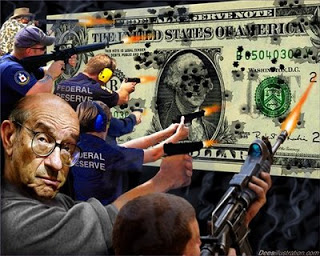 |
| Dees Illustration |
Porter Stansberry
Daily Wealth
The research I’ve laid out in the past few days (here, here, and here) suggests interest rates are inevitably headed higher. But how much higher?
Over the long term, the average real rate of interest on U.S. sovereign debt has been around 2% a year. The latest Producer Price Index (which we believe is more reliable than the Consumer Price Index) shows price inflation is currently 6.8% annually. Add the 2% real return we believe investors expect, and you get 10-year Treasury bonds yielding 8.8%.
Currently, those bonds yield only about 3%.
This implies a huge collapse of bond prices – a collapse of more than 50%.
A collapse of that magnitude would completely wipe out the stock market. It would be a massacre.
In truth, rates might go considerably higher than this for one fundamental reason. If the bond market crashes, investors would begin doubting America’s ability to finance its debts, never mind trying to repay them. As rates rise, the cost of maintaining our debts would grow substantially – perhaps doubling.
Keep in mind, the U.S. Treasury currently pays only 1.4% annually to borrow $14 trillion. Yes, 10-year Treasurys currently yield around 3%. But because the Treasury has issued so much more short-term debt than long-term debt, U.S. borrowing costs are lower.
No, all our debts wouldn’t “reset” to higher rates overnight. But the losses in the bond market, the losses in the stock market, and the resulting decline in business activity would cause a lot of our creditors to worry about our ability to afford higher interest payments.
Think about it this way: By the end of 2012, our national debt will likely exceed $17 trillion. Let’s assume our average interest increases to 4.4% – half the rate we believe investors will eventually demand. That works out to an annual interest expense of almost $750 billion. That’s more than we spend on defense or Social Security. Interest expenses would leave the government spending almost $0.25 of every dollar on interest payments.
Does that sound wise or reasonable to you?
linkwithin_text=’Related Articles:’


Be the first to comment on "This Is How the Dollar Dies"